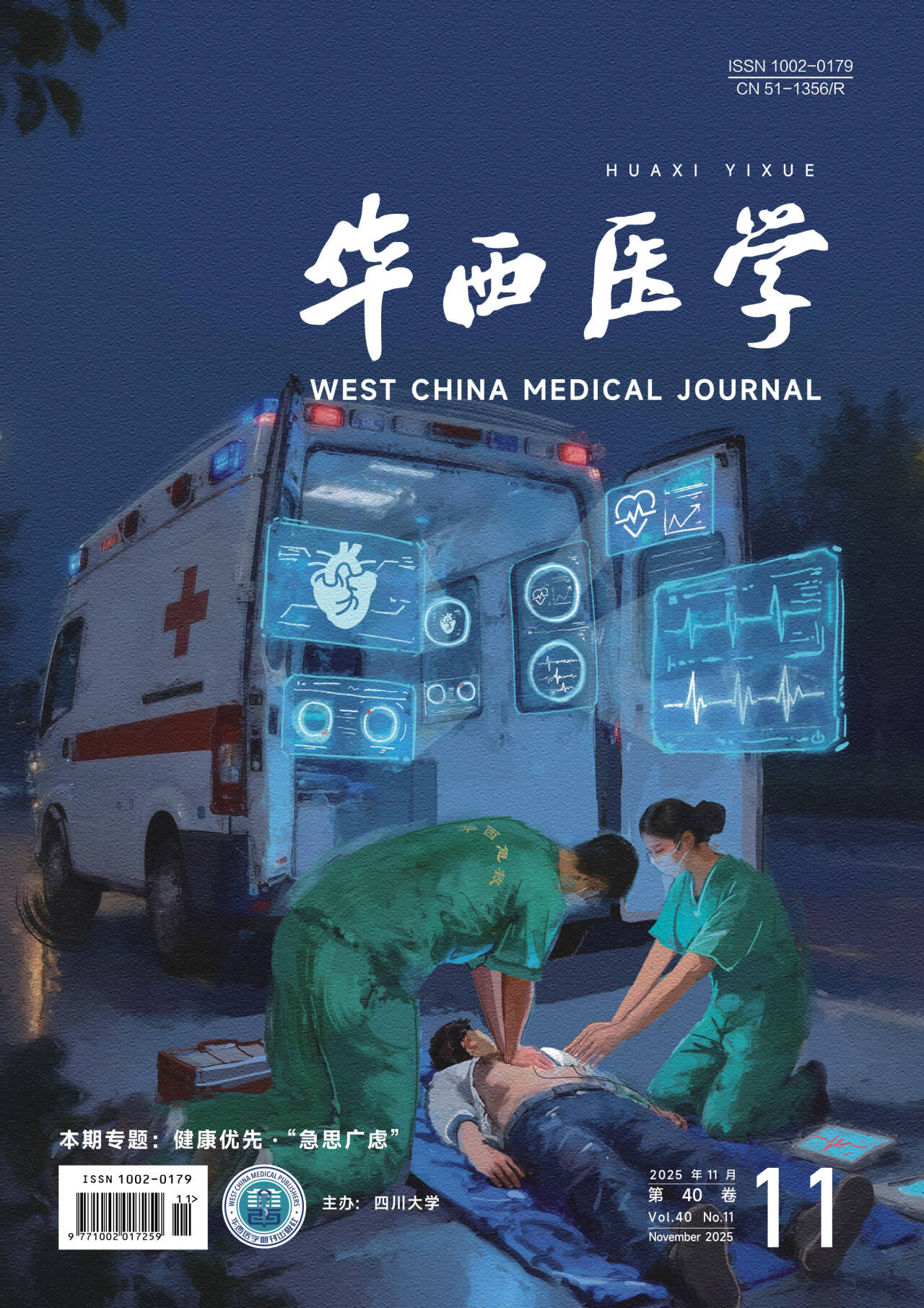| 1. |
Nishimura RA, Otto CM, Bonow RO, et al. 2014 AHA/ACC guideline for the management of patients with valvular heart disease a report of the American college of cardiology/American heart association task force on practice guidelines. J Am Coll Cardiol, 2014, 129(23): E521-E643.
|
| 2. |
Adams DH, Popma JJ, Reardon MJ, et al. Transcatheter aortic-valve replacement with a self-expanding prosthesis. N Engl J Med, 2014, 370(19): 1790-1798.
|
| 3. |
Leon MB, Smith CR, Mack MJ, et al. Transcatheter or surgical aortic-valve replacement in Intermediate-Risk patients. N Engl J Med, 2016, 374(17): 1609-1620.
|
| 4. |
Goldstein D, Moskowitz AJ, Gelijns AC, et al. Two-Year outcomes of surgical treatment of severe ischemic mitral regurgitation. N Engl J Med, 2016, 374(4): 344-353.
|
| 5. |
Michler RE, Smith PK, Parides MK, et al. Two-Year outcomes of surgical treatment of moderate ischemic mitral regurgitation. N Engl J Med, 2016, 374(20): 1932-1941.
|
| 6. |
Nishimura RA, Otto CM, Bonow RO, et al. 2017 AHA/ACC Focused Update of the 2014 AHA/ACC Guideline for the Management of Patients With Valvular Heart Disease: a report of the American College of Cardiology/American Heart Association Task Force on Clinical Practice Guidelines. J Am Coll Cardiol, 2017, 70(2): 252-289.
|
| 7. |
Kapadia SR, Leon MB, Makkar RR, et al. 5-year outcomes of transcatheter aortic valve replacement compared with standard treatment for patients with inoperable aortic stenosis (PARTNER 1): a randomised controlled trial. Lancet, 2015, 385(9986): 2485-2491.
|
| 8. |
Mack MJ, Leon MB, Smith CR, et al. 5-year outcomes of transcatheter aortic valve replacement or surgical aortic valve replacement for high surgical risk patients with aortic stenosis (PARTNER 1): a randomised controlled trial. Lancet, 2015, 385(9986): 2477-2484.
|
| 9. |
Makkar RR, Fontana GP, Jilaihawi H, et al. Transcatheter aortic-valve replacement for inoperable severe aortic stenosis. N Engl J Med, 2012, 366(18): 1696-1704.
|
| 10. |
Popma JJ, Adams DH, Reardon MJ, et al. Transcatheter aortic valve replacement using a self-expanding bioprosthesis in patients with severe aortic stenosis at extreme risk for surgery. J Am Coll Cardiol, 2014, 63(19): 1972-1981.
|
| 11. |
Kodali SK, Williams MR, Smith CR, et al. Two-year outcomes after transcatheter or surgical aortic-valve replacement. N Engl J Med, 2012, 366(18): 1686-1695.
|
| 12. |
Deeb GM, Reardon MJ, Chetcuti S, et al. 3-year outcomes in high-risk patients who underwent surgical or transcatheter aortic valve replacement. J Am Coll Cardiol, 2016, 67(22): 2565-2574.
|
| 13. |
Grover FL, Vemulapalli S, Carroll JD, et al. 2016 annual report of the society of thoracic surgeons/American college of cardiology transcatheter valve therapy registry. J Am Coll Cardiol, 2017, 69(10): 1215-1230.
|
| 14. |
Walther T, Hamm CW, Schuler GA, et al. Perioperative results and complications in 15,964 transcatheter aortic valve replacements prospective data from the Gary registry. J Am Coll Cardiol, 2015, 65(20): 2173-2180.
|
| 15. |
Gilard M, Schluter M, Snow TM, et al. The 2011-2012 pilot European Society of Cardiology Sentinel Registry of Transcatheter Aortic Valve Implantation: 12-month clinical outcomes. EuroIntervention, 2016, 12(1): 79-87.
|
| 16. |
Auffret V, Lefevre T, Van Belle EA, et al. Temporal trends in transcatheter aortic valve replacement in France France 2 to France TAVI. J Am Coll Cardiol, 2017, 70(1): 42-55.
|
| 17. |
Yoon SH, Ahn JM, Hayashida K, et al. Clinical outcomes following transcatheter aortic valve replacement in Asian population. JACC Cardiovasc Interv, 2016, 9(9): 926-933.
|
| 18. |
Reardon MJ, Van Mieghem NM, Popma JJ, et al. Surgical or transcatheter aortic-valve replacement in intermediate-risk patients. N Engl J Med, 2017, 376(14): 1321-1331.
|
| 19. |
Thourani VH, Kodali S, Makkar RR, et al. Transcatheter aortic valve replacement versus surgical valve replacement in intermediate-risk patients: a propensity score analysis. Lancet, 2016, 387(134): 2218-2225.
|
| 20. |
Unzue L, Garcia E, Teijeiro R, et al. Outcomes of patients at estimated low surgical risk undergoing transcatheter aortic valve implantation with balloon-expandable prostheses. Cardiovasc Revasc Med, 2017. doi: 10.1016/j.carrev.2017.08.012.
|
| 21. |
Frerker C, Bestehorn K, Schlueter MA, et al. In-hospital mortality in propensity-score matched low-risk patients undergoing routine isolated surgical or transfemoral transcatheter aortic valve replacement in 2014 in Germany. Clin Res Cardiol, 2017, 106(8): 610-617.
|
| 22. |
Rosato S, Santini F, Barbanti M, et al. Transcatheter aortic valve implantation compared with surgical aortic valve replacement in low-risk patients. Circ Cardiovasc Interv, 2016, 9(5): e003326.
|
| 23. |
Thyregod HG, Steinbruchel DA, Nissen H, et al. Transcatheter versus surgical aortic valve replacement in patients with severe aortic valve stenosis 1-Year results from the All-Comers NOTION randomized clinical trial. J Am Coll Cardiol, 2015, 65(20): 2184-2194.
|
| 24. |
Tribouilloy C, Rusinaru D, Grigioni FA, et al. Long-Term mortality associated with left ventricular dysfunction in mitral regurgitation due to flail leaflets a multicenter analysis. Circ Cardiovasc Imaging, 2014, 7(2): 363-370.
|
| 25. |
Suri RM, Vanoverschelde JL, Grigioni F, et al. Association between early surgical intervention vs watchful waiting and outcomes for mitral regurgitation due to flail mitral valve leaflets. JAMA, 2013, 310(6): 609-616.
|
| 26. |
Tribouilloy C, Rusinaru D, Szymanski CA, et al. Predicting left ventricular dysfunction after valve repair for mitral regurgitation due to leaflet prolapse: additive value of left ventricular end-systolic dimension to ejection fraction. Eur J Echocardiogr, 2011, 12(9): 702-710.
|
| 27. |
Mirabel M, Iung B, Baron G, et al. What are the characteristics of patients with severe, symptomatic, mitral regurgitation who are denied surgery?. Eur Heart J, 2007, 28(11): 1358-1365.
|
| 28. |
Feldman T, Kar S, Elmariah S, et al. Randomized comparison of percutaneous repair and surgery for mitral regurgitation 5-year results of Everest II. J Am Coll Cardiol, 2015, 66(25): 2844-2854.
|
| 29. |
Chiang YP, Chikwe J, Moskowitz AJ, et al. Survival and long-term outcomes following bioprosthetic vs mechanical aortic valve replacement in patients aged 50 to 69 years. JAMA, 2014, 312(13): 1323-1329.
|
| 30. |
Chikwe J, Chiang YP, Egorova NN, et al. Survival and outcomes following bioprosthetic vs mechanical mitral valve replacement in patients aged 50 to 69 years. JAMA, 2015, 313(14): 1435-1442.
|
| 31. |
Mcclure RS, Mcgurk S, Cevasco M, et al. Late outcomes comparison of nonelderly patients with stented bioprosthetic and mechanical valves in the aortic position: a propensity-matched analysis. J Thorac Cardiovasc Surg, 2014, 148(5): 1931-1939.
|
| 32. |
Dvir D, Webb JG, Bleiziffer S, et al. Transcatheter aortic valve implantation in failed bioprosthetic surgical valves. JAMA, 2014, 312(2): 162-170.
|
| 33. |
Ye J, Cheung A, Yamashita M, et al. Transcatheter aortic and mitral valve-in-valve implantation for failed surgical bioprosthetic valves an 8-year single-center experience. JACC Cardiovasc Interv, 2015, 8(13): 1735-1744.
|
| 34. |
Isaacs AJ, Shuhaiber J, Salemi A, et al. National trends in utilization and in-hospital outcomes of mechanical versus bioprosthetic aortic valve replacements. J Thorac Cardiovasc Surg, 2015, 149(5): 1262.
|
| 35. |
Fujita B, Ensminger S, Bauer T, et al. Trends in practice and outcomes from 2011 to 2015 for surgical aortic valve replacement: an update from the German Aortic Valve Registry on 42 776 patients. Eur J Cardiothorac Surg, 2017. doi: 10.1093/ejcts/ezx408.
|
| 36. |
Gammie JS, Sheng S, Griffith BP, et al. Trends in mitral valve surgery in the United States: results from the Society of Thoracic Surgeons Adult Cardiac Surgery Database. Ann Thorac Surg, 2009, 87(5):1431-1437; discussion 1437-1439.
|
| 37. |
Mérie C, K?ber L, Skov Olsen P, et al. Association of warfarin therapy duration after bioprosthetic aortic valve replacement with risk of mortality, thromboembolic complications, and bleeding. JAMA, 2012, 308(20): 2118-2125.
|
| 38. |
Egbe AC, Pislaru SV, Pellikka PA, et al. Bioprosthetic valve thrombosis versus structural failure clinical and echocardiographic predictors. J Am Coll Cardiol, 2015, 66(21): 2285-2294.
|
| 39. |
Dangas GD, Weitz JI, Giustino GA, et al. Prosthetic heart valve thrombosis. J Am Coll Cardiol, 2016, 68(24): 2671-2689.
|
| 40. |
Makkar RR, Fontana G, Jilaihawi H, et al. Possible subclinical leaflet thrombosis in bioprosthetic aortic valves. N Engl J Med, 2015, 373(21): 2015-2024.
|
| 41. |
Hansson NC, Grove EL, Andersen HR, et al. Transcatheter aortic valve thrombosis: incidence, predisposing factors, and clinical implications. J Am Coll Cardiol, 2016, 68(19): 2059-2069.
|
| 42. |
Pache G, Schoechlin S, Blanke P, et al. Early hypo-attenuated leaflet thickening in balloon-expandable transcatheter aortic heart valves. Eur Heart J, 2016, 37(28): 2263-2271.
|
| 43. |
Rodes-Cabau J, Masson JB, Welsh RC, et al. Aspirin versus aspirin plus clopidogrel as antithrombotic treatment following transcatheter aortic valve replacement with a balloon-expandable valve: the ARTE (Aspirin versus Aspirin + Clopidogrel Following Transcatheter Aortic Valve Implantation) randomized clinical trial. JACC Cardiovasc Interv, 2017, 10(13): 1357-1365.
|




